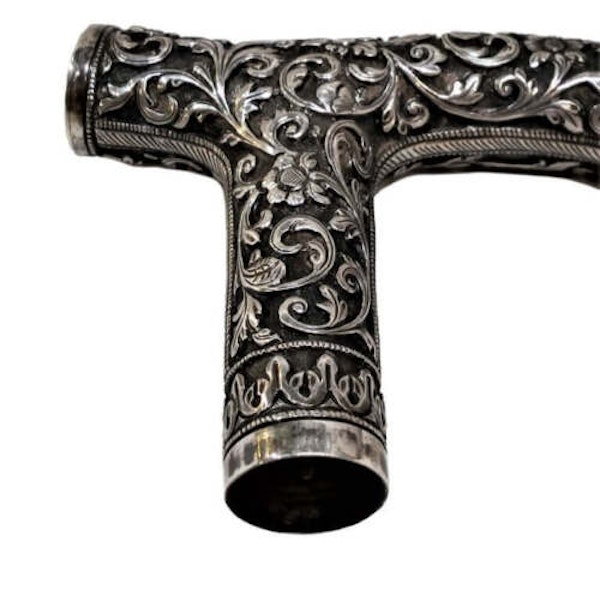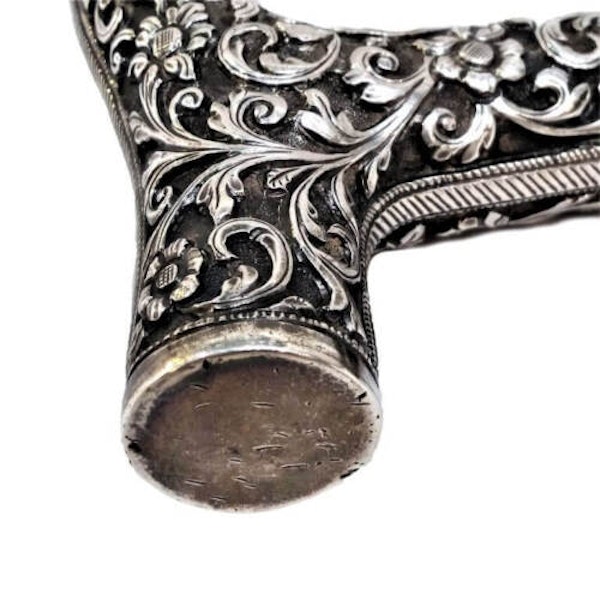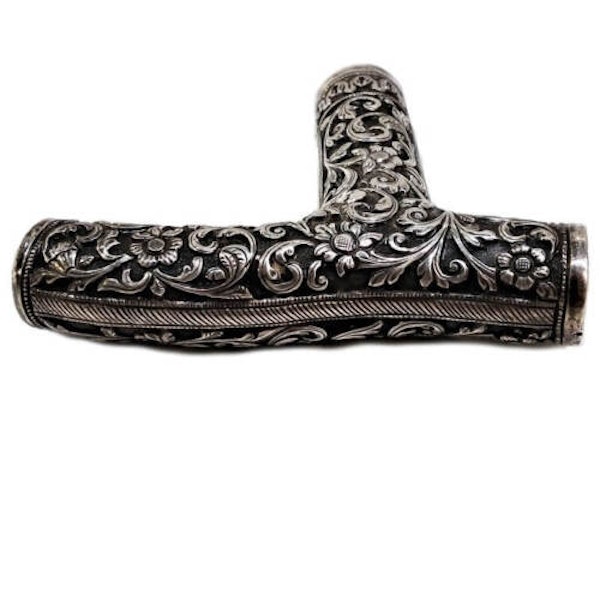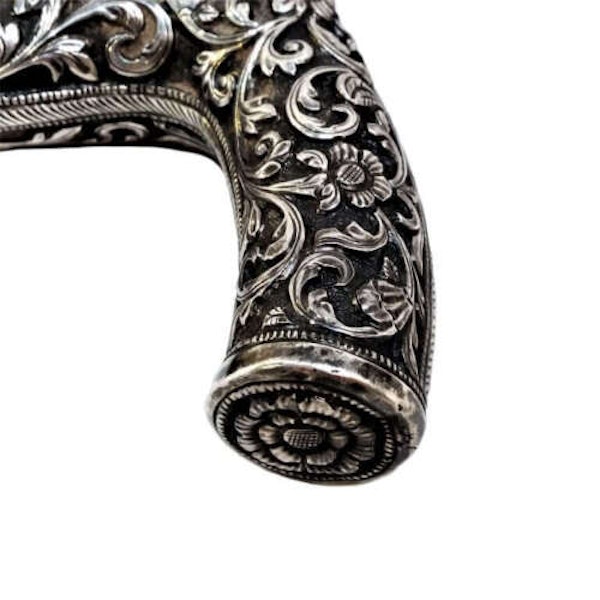Antique Indian Silver Walking Cane Handle, Oomersi Mawji, Kutch, India C. 1880
Antique Indian Silver Walking Cane Handle, Oomersi Mawji, Kutch, India C. 1880
£1,200.00
Description
This delightful antique silver cane handle was made in Bhuj in the Kutch region of India, now named Gujerat, around 1890. The handle has been signed to the plain silver band at the base of the neck and the mark is O.M. within a rectangular cartouche, signifying the maker to be the greatly revered Kutch silversmith, Oomersi Mawji of Bhuj.
The whole handle has been ornamented in Mawji’s languorous rambling and free flowing signature Kutch style using repousse and chased techniques with the scattered repousse elements raised above a finely incised background, producing a striking contrast. These floral and foliate elements were created freehand with the spacing and form of the foliage controlled only by the skill of the silversmith. As one would expect from Mawji, the craftsmanship and quality are both excellent and show the hallmarks of his mastery and assurance with all elements of the design well planned. He contrasts the richly ornamented free flowing naturalistic panels with the plain silver surround and the tailored simple diagonal hatched and beaded borders to the seams.
The handle is of circular section and resembles a ‘T’ shaped tree branch. The practicalities of use have been carefully considered: the profile has been subtly shaped in order that it lies comfortably and supports the hand when gripped. To either end of the top, the circular end sections have been capped with silver. Ever thoughtful, Mawji has capped one end with plain silver and the other, outwardly facing edge, with an ornamental boss depicting a lotus flower within beaded borders. The lotus flower would be front facing and visible from the front while the owner was walking and the other, plain silver end, would allow the owner to use the handle to knock on a door, for example, without damaging the ornament. Practically, the repousse and incised surface treatment also afforded grip, which was an important consideration in such a warm climate.
Mawji founded Oomersi Mawji & Co in Bhuj in 1860. Working with his sons, the firm became the premier Kutch silversmiths, widely known for its fine quality and highly skilled silverwork, coupled with exceptional design skills. Appointed Royal Silversmith to the Maharaja (Maharao) of Kutch, Mawji amassed a large international clientele who patronised his Bhuj workshop. Mawji’s workshops were enterprising and he received many fine and important commissions. He produced many masterpieces and typically used silver of extremely high purity, normally 95-98%. Practically, this meant that the material was softer and easier to manipulate. Mawji worked predominantly in the Kutch style but also in the European, ‘Madras swami’ and ‘Calcutta rural village’ styles. Participating in several foreign exhibitions, he won many prizes for his work and helped to popularise Kutch silver abroad, particularly in Great Britain. Oomersi Mawji has often been described as the greatest Indian silversmith of the nineteenth century and he was certainly the best known. Born into a humble family which belonged to the lowly cobbler's caste, he went on to achieve international success, wide acclaim and celebrity status during his lifetime. Although the firm ceased operation in the 1930s, it produced many spectacular pieces and his work has become some of the most sought after examples of Indian silver today. His genius has been recognised internationally with many of his creations now displayed in some of the world’s most important museums and private collections in locations around the globe.
| item details | |
|---|---|
| Origin | Asian |
| Period | 19th Century |
| Style | Other |
| Condition | Excellent |
| Dimensions | Weight: 60 grams |
| Diameter | Height 7.5 cms; Width 1.5 cms; Length 9 cm |
Product REF: 10050














